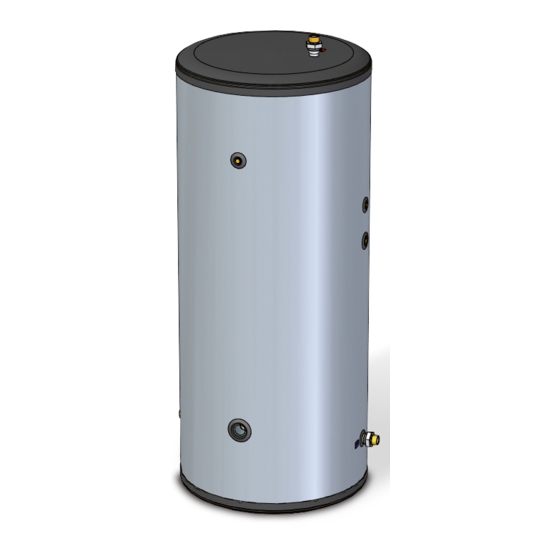DOMUSA TEKNIK Sanit S 1000 Installation And Operating Instructions Manual - Page 8
Browse online or download pdf Installation And Operating Instructions Manual for Water Heater DOMUSA TEKNIK Sanit S 1000. DOMUSA TEKNIK Sanit S 1000 20 pages.

Sanit
3 INSTALLATION INSTRUCTIONS
3.1 Hydraulic installation
Sanit hot water tanks are prepared to be permanently connected to domestic water supply
network, by means of DHW inlet. The maximum pressure admitted is specified in "Technical
characteristics" chapter.
The hydraulic installation must be made by qualified technicians, in compliance with current
installation regulations and taking the following recommendations into account:
- The secondary circuit (or domestic water circuit) is to be equipped with a safety valve,
calibrated to a maximum of 0,7 MPa (7 bar).
- The safety valve outlet must always lead to a drain.
- To avoid continuous leaking from the D.H.W. safety valve, we recommend the installation of a
D.H.W. expansion cell.
- The primary circuit (or heating circuit) for the double chamber tanks must be provided with a
safety valve, calibrated to a maximum of 3 bar.
- After installing the tank, firstly fill and pressurise the secondary circuit (domestic water circuit).
- After doing so, proceed to fill the primary circuit. Ensure the secondary circuit is full before
filling the primary circuit.
- Place dielectric sleeves on the secondary circuit connections.
- If the cold-water pressure is higher than the pressure the appliance is designed for, a pressure
reducer should be installed, calibrated to no higher than the design pressure.
- To prevent heat loss through the hot water pipes in accumulation systems, an anti-thermal
siphon must be installed at the hot water tank outlet. The hot water pipe must be insulated (at
least up to the anti-thermal siphon).
- A copper return circuit should not be used.
To drain the hot water tank, first drain the primary circuit and then the secondary circuit.
3.2 Location
The hot water tank must not be installed outdoors or in a place where it may be exposed to
weather inclemencies.
To optimise energy use, the hot water tank should be installed as close as possible to the hot water
generator.
When choosing a location, taken into account the weight of the full hot water tank, and make sure
it is protected against frost. The pipes should be lagged in compliance with heating regulations.
6
